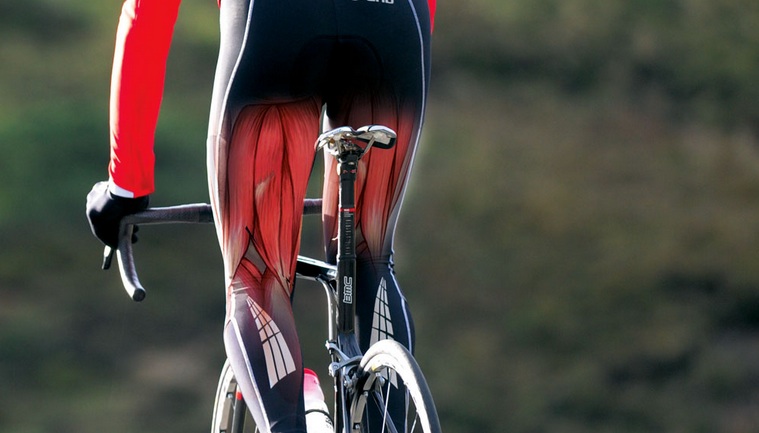Preventing cramps in cycling can be a challenge as there is no definitive “do this and you’ll be cured”. Cramps are an interesting issue as given the fact that nearly everyone has had them at some point in some way or another, scientific research has not directly pinpointed a cause and effect to them. There are factors that make their occurrence more likely as well as things you can do to help avoid them and to deal with them.

What is a Cramp
Exercise Associated Muscle Cramps (EAMC) are involuntary contractions of the muscle that can range from slight spasms to severe. The range as to which these can occur range from slight where you can ride through them, to severe where you can no longer pedal. They can be an individual muscle or a group of muscles and are typically the ones that are weaker and not ready for the effort that they are put under.
What Causes Cramps
The exact cause of cramping is not known but varying factors can increase their likelihood. Often times a combination of factors can cause a higher severity of cramps.
- One of the factors that can increase the likelihood of cramping is dehydration as well as low electrolyte levels. Electrolytes are what transmit the signals from your brain to your muscles telling them to fire. Having imbalanced levels of hydration and electrolytes at the cellular level can play a role in why your muscle spasms.
- A second factor to cramping is how the muscle is utilized. If the muscle is not in its ideal position to contract and relax it can be overstressed resulting in cramping. This often results when the position on the bike puts added stress on your quads, hamstrings or calves.
- The biggest contributor to muscle cramping while cycling is riding at an intensity or duration that your body is not yet ready for. In the simplest sense, your muscle fatigues and can no longer properly fire and thus cramping results. The above two factors, hydration and fit, directly influence how quickly a muscle fatigues.
How to Prevent Cramps
Once you get a muscle cramp they’re difficult to come back from. The key is to try and avoid them in the first place. Based on what can contribute to them, fixing those issues is going to bring the biggest relief.
- Before you can start riding more or hydrating better, you need to make sure that you have a good fit on the bike and are getting what you should out of each and every muscle. If you’ve had cramps in the past, take note of where they occurred. This is likely the result of your position on the bike being a little bit off which puts added stress on that area. Stretching that area can help, but the majority of the time that is just trying to fix the symptoms, not addressing the original cause of the cramp in the first place. For example, if you get cramps in your quads your saddle could be a bit low or your hamstrings may be a bit week thus placing more stress on your quads. Stretching the quad can help it but the cause of the problem isn’t necessarily in the quad. Getting an expert fit can help ensure that you’re getting the most out of your position or you can do it yourself with some expert guidance: (“How to Do a Proper Bike Fit“)
- The biggest influence on when cramps occur in a ride and the severity is how fit you are for the riding that you’re doing. The stronger you are and the more endurance you have, the less likely you will be to cramp. The muscle simply doesn’t reach its point of failure and can keep firing as it normally would. The best way to increase overall fitness is to simply ride more. On top of this, riding at higher intensities, particularly up climbs where you are using slightly different muscles, can put added stress on your muscles which in conjunction with recovery produces stronger muscles with increased endurance.
- Now that you have a proper fit on the bike and have the fitness level for the rides and races you are looking to do, you need to make sure you hydrate well with liquids and make sure that there are adequate levels of electrolytes in your drink for the conditions that you are riding in. In addition to having the right levels of hydration and electrolytes, consume enough carbohydrates before and during the ride. With most other areas of scientific research surrounding cramping, there is not a definitive study that says that adequate carbohydrate intake reduces or eliminates cramping. Cramping most often occurs as a result of muscle fatigue which can be exacerbated by not having enough energy supplied to the muscle. Having an adequate amount of carbs, in theory and seemingly practice, allows the muscle to continue firing as it should without cramping.
Cramping is a big issue that nearly all cyclists experience but is still not fully understood. As with a lot of things in cycling, everyone is different so you may find that some things cause you to cramp while other help cramping.
Follow these general approaches to solving your cramping issues in conjunction with your own trial and error. When you do in fact cramp, make a note of it, where in your leg you cramp as well as the factors surrounding it such as ride length, conditions, what you ate or didn’t eat before and during your ride. This will help to better understand your body and how it reacts to certain things. In addition to this, by simply riding more and/or with more quality riding, meaning focused climbs or intervals at higher intensities, the occurrence of cramps should diminish.